“[Man] is immortal, not because he alone among creatures has an inexhaustible voice, but because he has a soul, a spirit capable of compassion and sacrifice and endurance. The poet’s, the writer’s, duty is to write about these things.”
In Pioneer’s ongoing series of blogs here, on curricular resources for parents, families, and teachers during COVID-19, this one focuses on:
Introducing K-12 schoolchildren to the houses of great American writers
According to the Brookings Institution research, teaching great fiction is declining across America’s K-12 education system, so we’re offering resources to help parents, teachers, and schoolchildren to better appreciate great American writers and the places where they wrote:
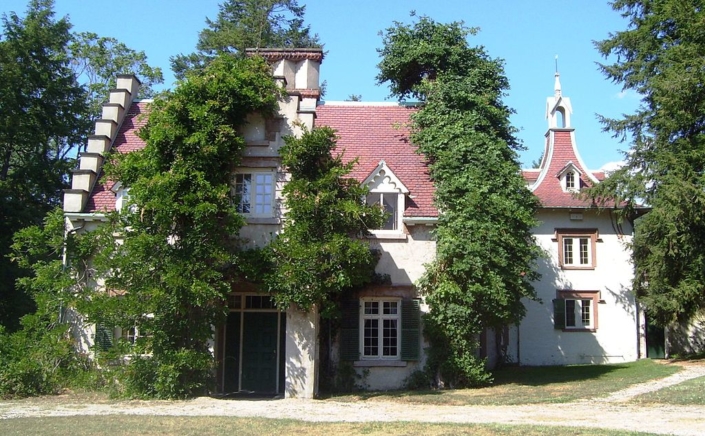
Washington Irving’s House, Sunnyside, Tarrytown, NY
“Sunnyside (1835) is a historic house on 10 acres along the Hudson River, in Tarrytown, New York. It was the home of the American author Washington Irving, best known for his short stories, such as "Rip Van Winkle" (1819) and "The Legend of Sleepy Hollow" (1820). This cottage-like estate, designated a National Historic Landmark in 1962, reflects Dutch Colonial Revival, Scottish Gothic, and Tudor Revival influences, with its wisteria-covered entrance and jagged crow-stepped gable.”

James Fenimore Cooper’s House, Otsego Hall, Cooperstown, NY (burned 1852)
“Otsego Hall was a house in Cooperstown, New York, United States built by William Cooper, founder of the town. Construction started in 1796 and was completed by 1799 in the Federal style. For many years, it was the manor house of Cooper's landed estate, and was the one of the largest private residences in central New York. Cooper had moved his family to the settlement in 1790, and his son James Fenimore Cooper, who became an author, also lived in the house… The mansion burned down a few years after his death in 1851, and the surrounding property was sold by the heirs. His daughter, Susan Fenimore Cooper, built a house in Cooperstown, built mainly of bricks and material salvaged from the ruins of Otsego Hall.”

Edgar Allan Poe’s House, Baltimore, MD
“The Edgar Allan Poe House and Museum, located at 203 North Amity St. in Baltimore, Maryland, is the former home of American writer Edgar Allan Poe in the 1830s. The small unassuming structure, which was opened as a writer's house museum in 1949, is a typical row home. It was designated a National Historic Landmark in 1972.”
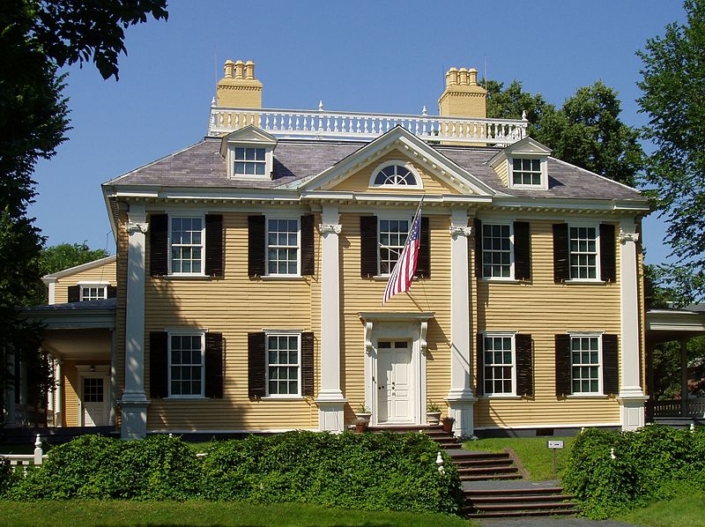
Henry Wadsworth Longfellow’s House, Cambridge, MA
“The Longfellow House–Washington's Headquarters National Historic Site (also known as the Vassall-Craigie-Longfellow House and, until December 2010, Longfellow National Historic Site) is a historic site located at 105 Brattle Street in Cambridge, Massachusetts. It was the home of noted American poet Henry Wadsworth Longfellow for almost 50 years, and it had previously served as the headquarters of General George Washington (1775–76).”

The Old Manse, home to Ralph Waldo Emerson and Nathaniel Hawthorne, Concord, MA
“In October 1834, Ralph Waldo Emerson moved to Concord and boarded at the Manse where he lived with his aging step-grandfather Ezra Ripley… While there, he wrote the first draft of his essay "Nature", a foundational work of the Transcendentalist movement… In 1842, the American writer Nathaniel Hawthorne rented the Old Manse for $100 a year. He moved in with his wife, transcendentalist Sophia Peabody, on July 9, 1842, as newlyweds… The Hawthornes lived in the house for three years. In the upstairs room that Hawthorne used as his study, one can still view affectionate sentiments that the two etched into the window panes.”

Henry David Thoreau’s Cabin, Walden Pond, Concord, MA
“The location of Henry David Thoreau’s cabin was discovered by archaeologist Roland Robbins in 1945, nearly 100 years after Thoreau left Walden Pond. In addition to the discovery of the original hearth stone, a number of artifacts from Thoreau’s stay were found, many of which are housed at the Thoreau Institute. While Thoreau’s cabin was deconstructed shortly after Thoreau left Walden, its image still exists today. A number of replicas have been created near Walden Pond including one at the Thoreau Institute.”

Herman Melville’s House, Arrowhead, Pittsfield, MA
“Arrowhead, also known as the Herman Melville House, is a historic house museum in Pittsfield, Massachusetts. It was the home of American author Herman Melville during his most productive years, 1850–1863. Here, Melville wrote some of his major work: the novels Moby-Dick, Pierre (dedicated to nearby Mount Greylock), The Confidence-Man, and Israel Potter; The Piazza Tales (a short story collection named for Arrowhead's porch); and magazine stories such as "I and My Chimney".”

Emily Dickinson’s House, Amherst, MA
“The Emily Dickinson Museum is a historic house museum consisting of two houses: the Dickinson Homestead (also known as Emily Dickinson Home or Emily Dickinson House) and the Evergreens. The Dickinson Homestead was the birthplace and home from 1855–1886 of 19th-century American poet Emily Dickinson (1830–1886), whose poems were discovered in her bedroom there after her death. The house next door, called the Evergreens, was built by the poet's father, Edward Dickinson, in 1856 as a wedding present for her brother Austin. Located in Amherst, Massachusetts, the houses are preserved as a single museum and are open to the public on guided tours.”
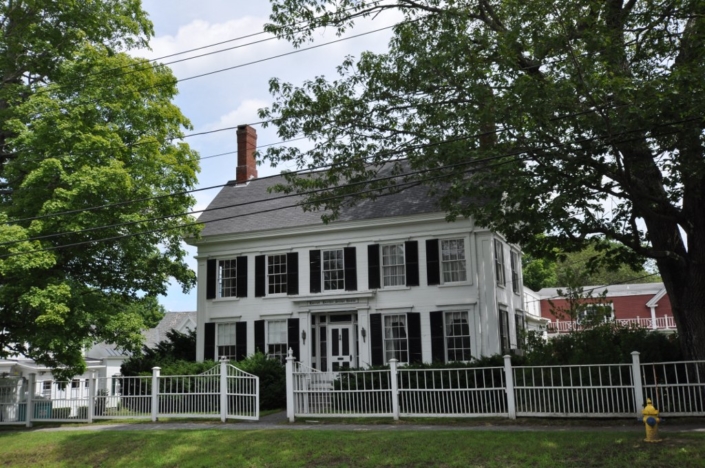
Harriet Beecher Stowe’s House, Brunswick, ME
“The Harriet Beecher Stowe House is a historic home and National Historic Landmark at 63 Federal Street in Brunswick, Maine, notable as a short-term home of Harriet Beecher Stowe and Calvin Ellis Stowe and where Harriet wrote her 1852 novel Uncle Tom's Cabin. Earlier, it had been the home of Henry Wadsworth Longfellow as a student. It is today owned by Bowdoin College. A space within the house, called Harriet's Writing Room, is open to the public.”
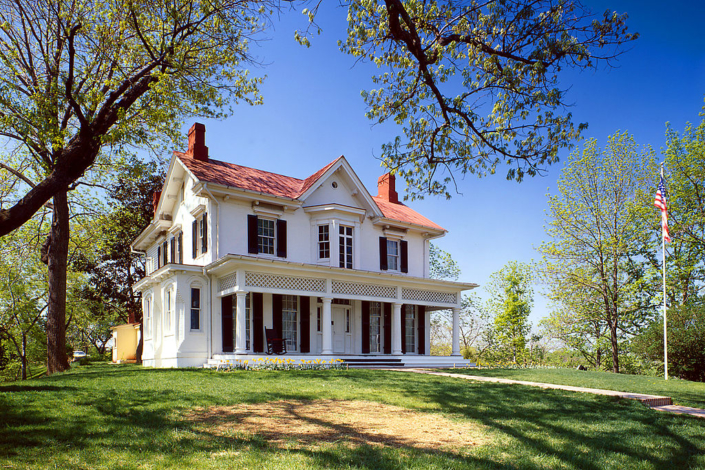
Frederick Douglass’s House, Cedar Hill, Washington, D.C.
“The Frederick Douglass National Historic Site, administered by the National Park Service, is located at 1411 W Street, SE, in Anacostia, a neighborhood east of the Anacostia River in Southeast Washington, D.C. Established in 1988 as a National Historic Site, the site preserves the home ad estate of Frederick Douglass, one of the most prominent African Americans of the 19th century. Douglass lived in this house, which he named Cedar Hill, from 1877-1888 until his death in 1895. Perched on a hilltop, the site offers a sweeping view of the U.S. Capitol and the Washington, D.C., skyline.”
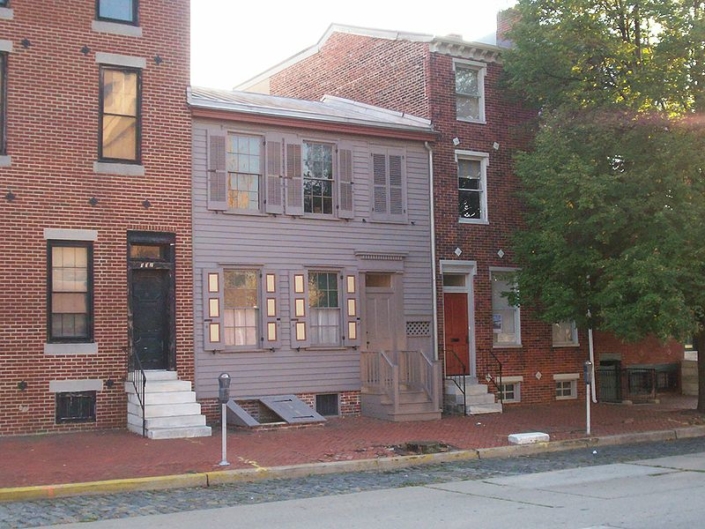
Walt Whitman’s House, Camden, NJ
“The Walt Whitman House is a historic building in Camden, Camden County, New Jersey, United States, which was the last residence of American poet Walt Whitman, in his declining years before his death. It is located at 330 Dr. Martin Luther King Jr. Boulevard, known as Mickle St. during Whitman's time there.”

Mark Twain’s House, Hartford, CT
“The Mark Twain House and Museum in Hartford, Connecticut, was the home of Samuel Langhorne Clemens (Mark Twain) and his family from 1874 to 1891. It was designed by Edward Tuckerman Potter and built in the American High Gothic style. Clemens biographer Justin Kaplan has called it "part steamboat, part medieval fortress and part cuckoo clock." Clemens wrote many of his best-known works while living there, including The Adventures of Tom Sawyer, The Prince and the Pauper, Life on the Mississippi, Adventures of Huckleberry Finn, A Tramp Abroad, and A Connecticut Yankee in King Arthur's Court.

Edith Wharton’s House, The Mount, Lenox, MA
“The Mount (1902) is a country house in Lenox, Massachusetts, the home of noted American author Edith Wharton, who designed the house and its grounds and considered it her "first real home." The estate, located in The Berkshires, is open to the public. The property was declared a National Historic Landmark in 1971.”

F. Scott Fitzgerald’s House, Great Neck, Long Island, NY
“F. Scott Fitzgerald and his wife once lived on Long Island. Together renting a 5,000 square foot home in Great Neck from 1922 to 1924. At this time in his life living on Long Island is where he was inspired to write his most prolific novel, The Great Gatsby. It was said the muse came from a Mansion in Sands Point, NY at the address 235 Middle Neck Road.”

Ernest Hemingway’s House, Key West, FL
“The Ernest Hemingway House was the residence of American writer Ernest Hemingway in the 1930s. The house is situated on the island of Key West in Florida. It is at 907 Whitehead Street, across from the Key West Lighthouse, close to the southern coast of the island. Due to its association with Hemingway, the property is the most popular tourist attraction in Key West. It is also famous for its large population of cats, many of which are polydactyl.”

John Steinbeck’s House, Monte Sereno, CA
“The John Steinbeck House at 16250 Greenwood Lane in Monte Sereno, California, was the home of author John Steinbeck from 1936 to 1938. The house was built in 1936, in the foothills of the Santa Cruz Mountains in what was then part of the town of Los Gatos, California, for Steinbeck and his wife, Carol. While living in the house, Steinbeck wrote The Grapes of Wrath and completed Of Mice and Men. The Steinbecks added a guest house to the property after the house's completion; renowned actors, literary agents, and friends of the Steinbecks stayed in the guest house while visiting the couple. In 1938, the Steinbecks left the house, as they felt that its location was no longer as secluded as it had been two years earlier.”

Langston Hughes’s House, Harlem, NYC
“Langston Hughes House is a historic home located in Harlem, Manhattan, New York City. It is an Italianate style dwelling built in 1869. It is a three story with basement, row house faced in brownstone and measuring 20 feet wide and 45 feet deep. Noted African-American poet and author Langston Hughes (1902-1967. occupied the top floor as his workroom from 1947 to 1967.It was listed on the National Register of Historic Places in 1982, and was designated as a city landmark by the New York City Landmarks Preservation Commission in 1981.”

Zora Neale Hurston’s House, Pierce, Florida
“The Zora Neale Hurston House is a historic house at 1734 Avenue L in Fort Pierce, Florida. Built in 1957, it was the home of author Zora Neale Hurston (1891-1960) from then until her death. On December 4, 1991, it was designated as a U.S. National Historic Landmark.”

Pearl S. Buck’s House, Green Hills Farm, Bucks County, PA
“The Pearl S. Buck House, formerly known as Green Hills Farm, is the 67-acre homestead in Bucks County, Pennsylvania, where Nobel-prize-winning American author Pearl Buck lived for 40 years, raising her family, writing, pursuing humanitarian interests, and gardening. She purchased the house in 1933 and lived there until the late 1960s, when she moved to Danby, Vermont. She completed many works while on the farm, including This Proud Heart (1938), The Patriot (1939), Today and Forever (1941), and The Child Who Never Grew (1950). The farm, a National Historic Landmark, is located on Dublin Road southwest of Dublin, Pennsylvania. It is now a museum open to the public.”
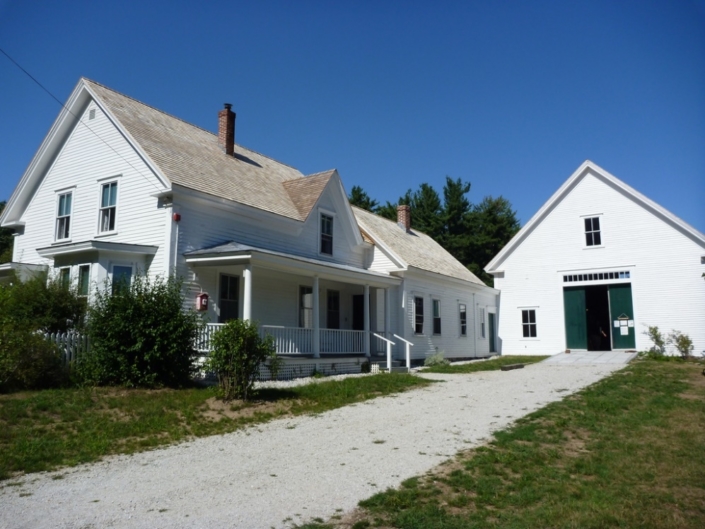
Robert Frost’s Farm, Derry, NH
“The Robert Frost Farm in Derry, New Hampshire is a two-story, clapboard, connected farm built in 1884. It was the home of poet Robert Frost from 1900 to 1911. Today it is a New Hampshire state park in use as a historic house museum. The property is listed in the National Register of Historic Places as the Robert Frost Homestead.”

Tennessee Williams’s House, 1014 Dumaine Street, New Orleans, LA
“Tennessee Williams was no stranger to New Orleans. Some of his most famous works, including A Streetcar Named Desire, are set in the city. Although Williams spent decades living on and off in rental spaces, 1014 Dumaine Street is the first home he owned in New Orleans. Purchased in 1962, the building was not always what one would imagine as the home of a world-renowned writer.”
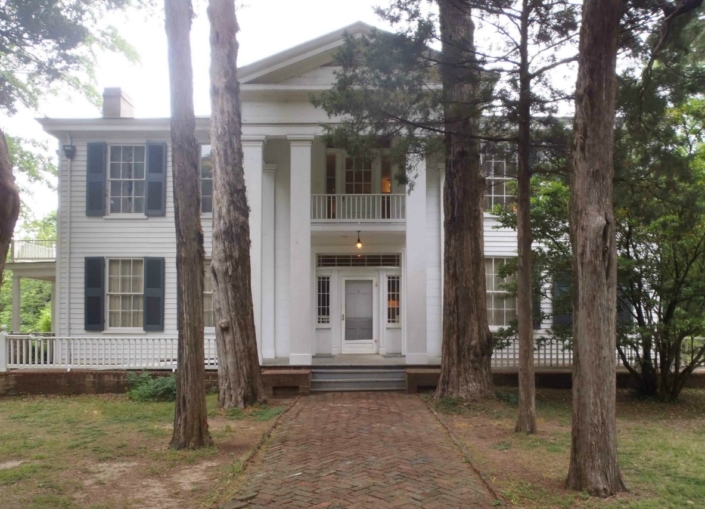
William Faulkner’s House, Rowan Oak, Oxford, MS
“Rowan Oak, also known as William Faulkner House, is William Faulkner's former home in Oxford, Mississippi. It is a primitive Greek Revival house built in the 1840s by Robert Sheegog. Faulkner purchased the house when it was in disrepair in the 1930s and did many of the renovations himself. Other renovations were done in the 1950s. The house sits on 4 landscaped and twenty nine acres of largely wooded property known as Bailey's Woods. One of its more famous features is the outline of Faulkner's Pulitzer Prize–winning novel A Fable, penciled in graphite and red on the plaster wall of his study. Though the "rowan oak" is a mythical tree, the grounds and surrounding woods of Rowan Oak contain hundreds of species of native Mississippi plants, most of which date back to antebellum times. The alley of cedars that lines the driveway was common in the 19th century… Faulkner drew much inspiration for his treatment of multi-layered Time from Rowan Oak, where past and future seemed to inhabit the present.”

Ralph Ellison’s Apartment, Harlem, NYC
“On June 18, 2013, the Landmarks Preservation Commission held a hearing on the potential individual landmark designation of the Beaumont Apartments, at 730 Riverside Drive at the corner of 150th Street, in Harlem… The eleven-story structure features a wide array of decorative brickwork and terra cotta ornament above its two-story limestone base, including foliated terra-cotta band courses and octagonal panels with birds in high relief. U.S. Representative Jacob Javits and singer Marian Anderson were tenants of the building, and Ralph Ellison, author of Invisible Man, was also a long-time resident.”

Arthur Miller’s House, Roxbury, CT
“Glimpsed through the trees in the image above is a house that was once the home of two of the most famous people of the twentieth century. Located at 232 Tophet Road in Roxbury, it has been much altered over the years. It was built for a Revolutionary War veteran and was later the residence of playwright Arthur Miller and his wife (from 1956 to 1961) Marilyn Monroe. The couple had originally planned to replace the old farmhouse with a new home designed by Frank Lloyd Wright, but they decided the plan produced by the famous architect was too impractical and expensive.”
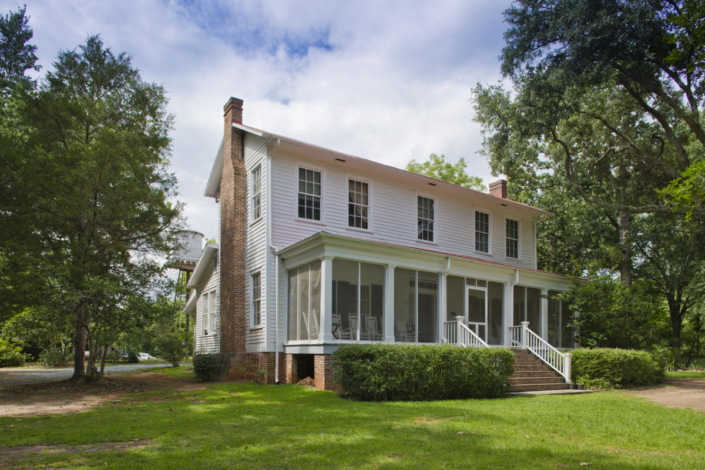
Flannery O’Connor’s Farm House, Andalusia, Milledgeville, GA
“Andalusia is the name of Southern American author Flannery O'Connor's rural Georgia estate. The estate is located in Baldwin County, Georgia, approximately 4 miles northwest of Milledgeville. It comprises 544 acres, including the house where O'Connor wrote some of her last and best-known fiction.”



